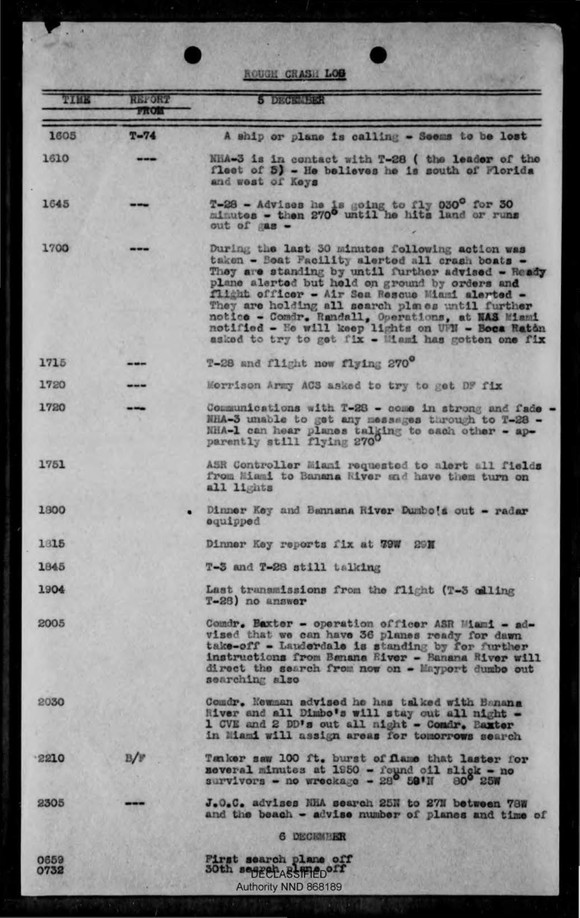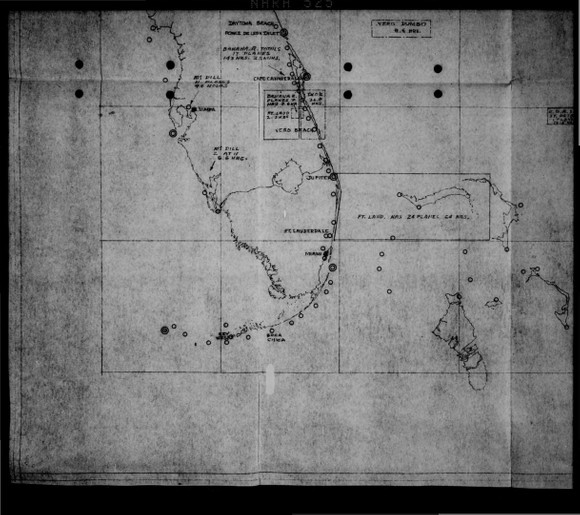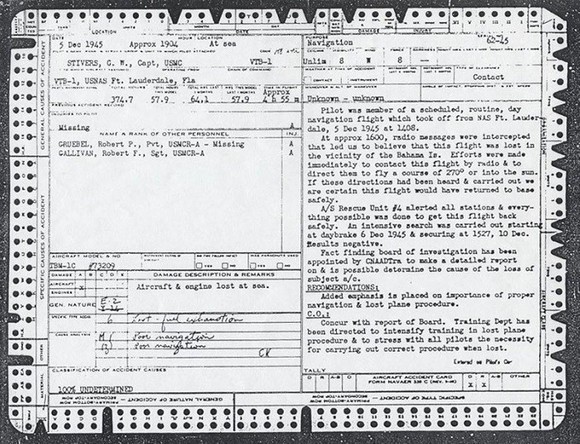Starting from:
$9.95
Home
Aviation Space
Disappearance of Flight 19, Five Navy Avenger Bombers (Bermuda Triangle) Dec. 5, 1945 Navy Documents
Disappearance of Flight 19, Five Navy Avenger Bombers (Bermuda Triangle) Dec. 5, 1945 Navy Documents
Disappearance of Flight 19, Five Navy Avenger Torpedo Bombers (Bermuda Triangle) December 5, 1945 Navy Documents
611 pages of documents related to the Disappearance of Flight 19, Five Navy avenger torpedo bombers, over the Bermuda Triangle, on December 5, 1945
At 2:10 p.m. on December 5, 1945, five Navy Avenger Torpedo Bombers disappeared while on a training mission in an area often referred to as the "Bermuda Triangle." The Bermuda Triangle is an area that covers 440,000 square miles between the Bermuda Islands, the coast of Southern Florida, and San Juan, Puerto Rico.
The airplanes departed that afternoon from the U.S. Naval Air Station in Fort Lauderdale, Florida, on what has become known as Flight 19. The airplanes were on a routine navigation exercise over the Atlantic Ocean. At about 4 p.m. a radio message was received from Flight 19. The message stated that they were lost and uncertain of the direction to the Florida coast. There was also some indication that the compasses on the airplanes were malfunctioning. Due to radio traffic, communication with Flight 19 was difficult. After several attempts to lead the ill-fated flight to safety, radio contact was lost, and the flight was never heard from again.
A massive search was launched over the next five days for the squadron. Over 200 airplanes a day searched for the missing crews. Despite this enormous search effort, no trace of the airplanes or the crew was ever found. In fact, one of the PBM patrol planes involved in the search for Flight 19 also vanished on December 5, 1945.
On December 10, 1945, the search was called off with a total of 27 men and six airplanes still missing. A Board of Investigation convened at the U.S. Naval Air Station on December 10, 1945, and subsequently released their Findings of Fact. The Findings of Fact point to factors that may have contributed to the loss of the airplanes. However, to some the disappearance of Flight 19 remains one of the greatest unsolved mysteries of the "Bermuda Triangle.”
Numerous luridly titled books, articles, and movies have posited strange magnetic disturbances, whirlpools, sea monsters, and extraterrestrial aliens as the cause of the tragic but all too explainable maritime losses in the Bermuda Triangle. Perhaps the most famous of these was the reappearance of Flight 19, neither aged nor damaged, in the 1977 film Close Encounters of the Third Kind.
The Navy concluded in their investigation that Flight 19 got lost through pilot error, so much so that Lieutenant Taylor was “uncertain as to in what position lay the Peninsula of Florida,” and therefore had to ditch in darkness and poor weather, resulting in the loss of all aircraft and crew.
This collection includes:
Records of the Naval Air Advanced Training Command in Jacksonville, Florida
545 pages of records related to this incident and include weather observations, the history of the aircraft and engine logs, a rough crash log, radio station logs, preflight forms, communication logs, incident reports, air/sea rescue plans, maps of the search area, and the Board of investigation’s Findings of Fact. These records are located at the National Archives-Southwest Region in Fort Worth, Texas. They are part of the Records of Naval Districts and Shore Establishments, Record Group 181
Naval Aviation News
The June 1973 issue with the cover story, "Six Planes and 27 Men Disappeared on the Famous Lost Patrol What Really Happened?"
Aircraft Accident Cards
Six Aircraft Accident Cards (NAVAIR339C) for the lead pilot, four instructors, and the search aircraft pilot.





611 pages of documents related to the Disappearance of Flight 19, Five Navy avenger torpedo bombers, over the Bermuda Triangle, on December 5, 1945
At 2:10 p.m. on December 5, 1945, five Navy Avenger Torpedo Bombers disappeared while on a training mission in an area often referred to as the "Bermuda Triangle." The Bermuda Triangle is an area that covers 440,000 square miles between the Bermuda Islands, the coast of Southern Florida, and San Juan, Puerto Rico.
The airplanes departed that afternoon from the U.S. Naval Air Station in Fort Lauderdale, Florida, on what has become known as Flight 19. The airplanes were on a routine navigation exercise over the Atlantic Ocean. At about 4 p.m. a radio message was received from Flight 19. The message stated that they were lost and uncertain of the direction to the Florida coast. There was also some indication that the compasses on the airplanes were malfunctioning. Due to radio traffic, communication with Flight 19 was difficult. After several attempts to lead the ill-fated flight to safety, radio contact was lost, and the flight was never heard from again.
A massive search was launched over the next five days for the squadron. Over 200 airplanes a day searched for the missing crews. Despite this enormous search effort, no trace of the airplanes or the crew was ever found. In fact, one of the PBM patrol planes involved in the search for Flight 19 also vanished on December 5, 1945.
On December 10, 1945, the search was called off with a total of 27 men and six airplanes still missing. A Board of Investigation convened at the U.S. Naval Air Station on December 10, 1945, and subsequently released their Findings of Fact. The Findings of Fact point to factors that may have contributed to the loss of the airplanes. However, to some the disappearance of Flight 19 remains one of the greatest unsolved mysteries of the "Bermuda Triangle.”
Numerous luridly titled books, articles, and movies have posited strange magnetic disturbances, whirlpools, sea monsters, and extraterrestrial aliens as the cause of the tragic but all too explainable maritime losses in the Bermuda Triangle. Perhaps the most famous of these was the reappearance of Flight 19, neither aged nor damaged, in the 1977 film Close Encounters of the Third Kind.
The Navy concluded in their investigation that Flight 19 got lost through pilot error, so much so that Lieutenant Taylor was “uncertain as to in what position lay the Peninsula of Florida,” and therefore had to ditch in darkness and poor weather, resulting in the loss of all aircraft and crew.
This collection includes:
Records of the Naval Air Advanced Training Command in Jacksonville, Florida
545 pages of records related to this incident and include weather observations, the history of the aircraft and engine logs, a rough crash log, radio station logs, preflight forms, communication logs, incident reports, air/sea rescue plans, maps of the search area, and the Board of investigation’s Findings of Fact. These records are located at the National Archives-Southwest Region in Fort Worth, Texas. They are part of the Records of Naval Districts and Shore Establishments, Record Group 181
Naval Aviation News
The June 1973 issue with the cover story, "Six Planes and 27 Men Disappeared on the Famous Lost Patrol What Really Happened?"
Aircraft Accident Cards
Six Aircraft Accident Cards (NAVAIR339C) for the lead pilot, four instructors, and the search aircraft pilot.





1 file (104.2MB)



